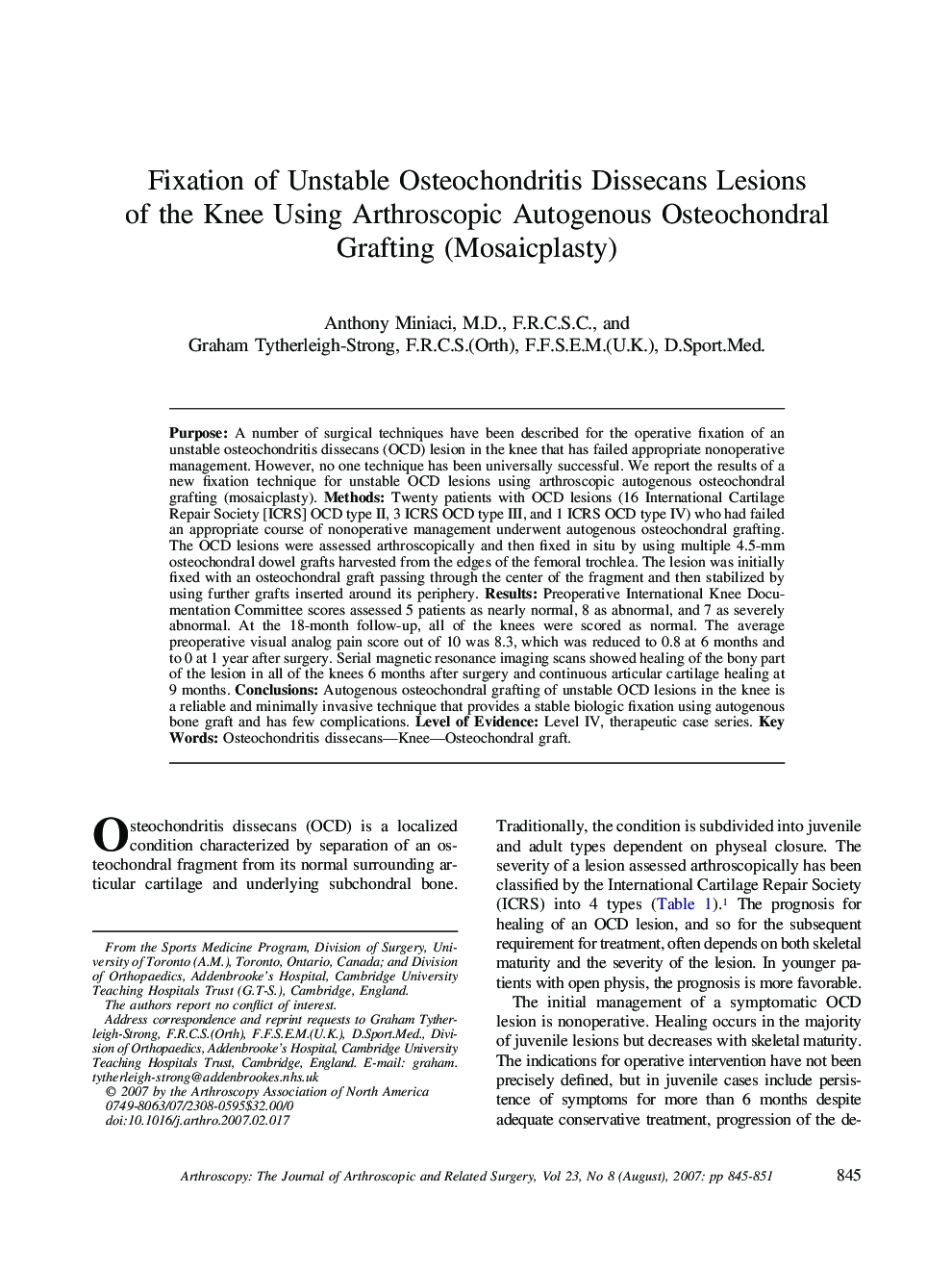| کد مقاله | کد نشریه | سال انتشار | مقاله انگلیسی | نسخه تمام متن |
|---|---|---|---|---|
| 4047501 | 1603594 | 2007 | 7 صفحه PDF | دانلود رایگان |
عنوان انگلیسی مقاله ISI
Fixation of Unstable Osteochondritis Dissecans Lesions of the Knee Using Arthroscopic Autogenous Osteochondral Grafting (Mosaicplasty)
دانلود مقاله + سفارش ترجمه
دانلود مقاله ISI انگلیسی
رایگان برای ایرانیان
کلمات کلیدی
موضوعات مرتبط
علوم پزشکی و سلامت
پزشکی و دندانپزشکی
ارتوپدی، پزشکی ورزشی و توانبخشی
پیش نمایش صفحه اول مقاله

چکیده انگلیسی
Purpose: A number of surgical techniques have been described for the operative fixation of an unstable osteochondritis dissecans (OCD) lesion in the knee that has failed appropriate nonoperative management. However, no one technique has been universally successful. We report the results of a new fixation technique for unstable OCD lesions using arthroscopic autogenous osteochondral grafting (mosaicplasty). Methods: Twenty patients with OCD lesions (16 International Cartilage Repair Society [ICRS] OCD type II, 3 ICRS OCD type III, and 1 ICRS OCD type IV) who had failed an appropriate course of nonoperative management underwent autogenous osteochondral grafting. The OCD lesions were assessed arthroscopically and then fixed in situ by using multiple 4.5-mm osteochondral dowel grafts harvested from the edges of the femoral trochlea. The lesion was initially fixed with an osteochondral graft passing through the center of the fragment and then stabilized by using further grafts inserted around its periphery. Results: Preoperative International Knee Documentation Committee scores assessed 5 patients as nearly normal, 8 as abnormal, and 7 as severely abnormal. At the 18-month follow-up, all of the knees were scored as normal. The average preoperative visual analog pain score out of 10 was 8.3, which was reduced to 0.8 at 6 months and to 0 at 1 year after surgery. Serial magnetic resonance imaging scans showed healing of the bony part of the lesion in all of the knees 6 months after surgery and continuous articular cartilage healing at 9 months. Conclusions: Autogenous osteochondral grafting of unstable OCD lesions in the knee is a reliable and minimally invasive technique that provides a stable biologic fixation using autogenous bone graft and has few complications. Level of Evidence: Level IV, therapeutic case series.
ناشر
Database: Elsevier - ScienceDirect (ساینس دایرکت)
Journal: Arthroscopy: The Journal of Arthroscopic & Related Surgery - Volume 23, Issue 8, August 2007, Pages 845-851
Journal: Arthroscopy: The Journal of Arthroscopic & Related Surgery - Volume 23, Issue 8, August 2007, Pages 845-851
نویسندگان
Anthony M.D., F.R.C.S.C., Graham F.R.C.S.(Orth), F.F.S.E.M.(U.K.), D.Sport.Med.,